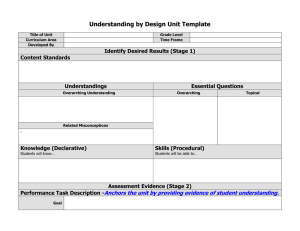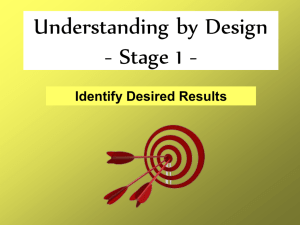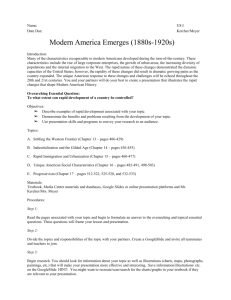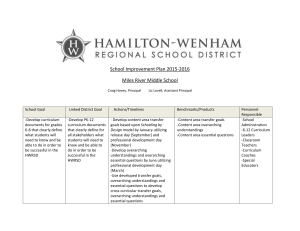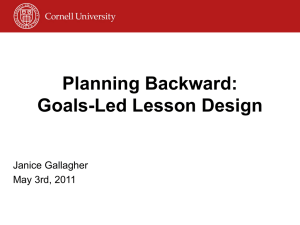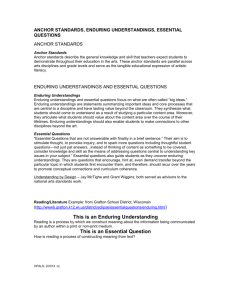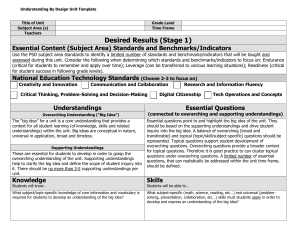Using Backward Design In the Gifted Classroom
advertisement
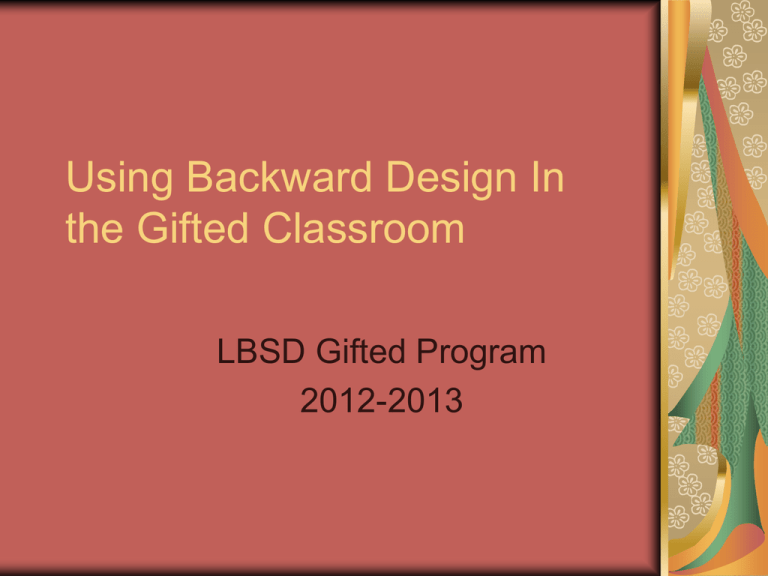
Using Backward Design In the Gifted Classroom LBSD Gifted Program 2012-2013 Why Use UbD in Gifted? Teachers tend to design curriculum around content rather than design learning experiences around the Overarching Concepts and Essential Questions that relate to standards and are at the heart of learning. Overarching or Unifying Concept The “Big Idea”- To begin your lesson, broaden the thought process to what you want your students to know and critically think about in a discipline as they mature into adults in society. You need a statement under the topic listing the overarching or unifying concept and the topic. Examples: Overarching/Unifying Concept Topic Nature in the Balance Global Warming Global Connections Power Conflict The Internet Hitler The Civil War Standards You use the gifted process skills as outlined in our LBSD Scope and Sequence for your standards. Put numbers and write out the objective for your lesson. Summative Assessment A main premise of backward design is to begin by determining what is mastery of the final goals or standards. You need a statement of expectation. What assessment or measurement can be used to determine if students have learned the most vital information? Formative Assessment The teacher should have formative assessment in key junctures of a unit to understand student needs and learning. This can drive differentiated instruction. Affective Assessment You can create assessments that: Support student metacognition Support a positive classroom atmosphere Support affective understanding Support self-directedness Support self-efficacy or the belief in one’s ability to succeed (working collaboratively) Enduring Understandings What has enduring value in your unit? This may take critical thinking and research for you to determine what has endured in your unit of study. Examples: Topic/Concept Understandings Ecosystems/Nature in the balance Everything in nature in interrelated. Weather and Water/ Systems Systems are interconnected Essential Questions Should: Be important to the past, present, and future of a discipline as they are crafted from the enduring understandings. Be under the umbrella of the overarching concept Describe the way the unit will unfold Be open-ended Create student interest and be thought provoking Address standards as needed Examples: Enduring Understanding: There is unexplained evil in the world. Essential Questions: Why are we sometimes confronted with unexplained evil? Why does evil exist in the world? Discovery and Uncoverage Ideas While “telling” or lecturing may be more efficient time-wise, learning is an active process. Students learn best when they are allowed, as much as possible, to research, examine, create, judge, draw conclusions, make connections, inquire, and find the answer to important questions. Key word: Authentic learning Engaging Students Though Invitation and the Learning Experience You want active learning instead of passive learning. Examples: Active Learning: Creating Critical thinking Choice Passive Learning: Teacher-centered Memorization Teacher makes all learning choices Understanding by Design Wiggins and McTighe (1998;2005)


